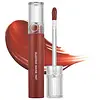What's inside
What's inside
 Key Ingredients
Key Ingredients

No key ingredients
 Benefits
Benefits

 Concerns
Concerns

 Ingredients Side-by-side
Ingredients Side-by-side

Isododecane
EmollientDimethicone
EmollientTrimethylsiloxysilicate
EmollientPolymethylsilsesquioxane/Trimethylsiloxysilicate
Polypropylsilsesquioxane
C30-45 Alkyldimethylsilyl Polypropylsilsesquioxane
Trimethylsiloxyphenyl Dimethicone
Trimethyl Pentaphenyl Trisiloxane
EmollientBis-Stearyl Dimethicone
EmollientDimethiconol
EmollientTrihydroxystearin
Skin ConditioningPhenoxyethanol
PreservativeAlumina
AbrasiveEthylhexylglycerin
Skin ConditioningTocopheryl Acetate
AntioxidantTriethoxycaprylylsilane
Limonene
PerfumingIsopropyl Palmitate
EmollientIsopropyl Myristate
EmollientSilica
AbrasiveBenzyl Benzoate
AntimicrobialBenzyl Alcohol
PerfumingCitronellol
PerfumingLinalool
PerfumingAloe Barbadensis Leaf Extract
EmollientTocopherol
AntioxidantParfum
MaskingCI 77891
Cosmetic ColorantCI 15850
Cosmetic ColorantCI 77491
Cosmetic ColorantCI 77492
Cosmetic ColorantCI 77499
Cosmetic ColorantCI 45410
Cosmetic ColorantCI 45380
Cosmetic ColorantCI 15985
Cosmetic ColorantCI 19140
Cosmetic ColorantCI 17200
Cosmetic ColorantCI 77742
Cosmetic ColorantCI 42090
Cosmetic ColorantCeramide AP
Skin ConditioningIsododecane, Dimethicone, Trimethylsiloxysilicate, Polymethylsilsesquioxane/Trimethylsiloxysilicate, Polypropylsilsesquioxane, C30-45 Alkyldimethylsilyl Polypropylsilsesquioxane, Trimethylsiloxyphenyl Dimethicone, Trimethyl Pentaphenyl Trisiloxane, Bis-Stearyl Dimethicone, Dimethiconol, Trihydroxystearin, Phenoxyethanol, Alumina, Ethylhexylglycerin, Tocopheryl Acetate, Triethoxycaprylylsilane, Limonene, Isopropyl Palmitate, Isopropyl Myristate, Silica, Benzyl Benzoate, Benzyl Alcohol, Citronellol, Linalool, Aloe Barbadensis Leaf Extract, Tocopherol, Parfum, CI 77891, CI 15850, CI 77491, CI 77492, CI 77499, CI 45410, CI 45380, CI 15985, CI 19140, CI 17200, CI 77742, CI 42090, Ceramide AP
Water
Skin ConditioningDiphenyl Dimethicone
EmollientDiisostearyl Malate
EmollientBis-Diglyceryl Polyacyladipate-2
EmollientOctyldodecanol
EmollientHydrogenated Polyisobutene
EmollientBis-Behenyl/Isostearyl/Phytosteryl Dimer Dilinoleyl Dimer Dilinoleate
EmollientDiglycerin
HumectantDipropylene Glycol
HumectantCetyl PEG/PPG-10/1 Dimethicone
EmulsifyingSorbitan Isostearate
EmulsifyingPolysorbate 60
EmulsifyingPentylene Glycol
Skin ConditioningHydroxyethyl Acrylate/Sodium Acryloyldimethyl Taurate Copolymer
Emulsion StabilisingCeteareth-20
CleansingSqualane
EmollientPhenoxyethanol
PreservativeCI 15985
Cosmetic ColorantGlycerin
HumectantTitanium Dioxide
Cosmetic ColorantPolyglycerin-3
HumectantParfum
MaskingStevioside
MaskingAcid Red 33
Ethylhexylglycerin
Skin ConditioningCI 42090
Cosmetic ColorantWater, Diphenyl Dimethicone, Diisostearyl Malate, Bis-Diglyceryl Polyacyladipate-2, Octyldodecanol, Hydrogenated Polyisobutene, Bis-Behenyl/Isostearyl/Phytosteryl Dimer Dilinoleyl Dimer Dilinoleate, Diglycerin, Dipropylene Glycol, Cetyl PEG/PPG-10/1 Dimethicone, Sorbitan Isostearate, Polysorbate 60, Pentylene Glycol, Hydroxyethyl Acrylate/Sodium Acryloyldimethyl Taurate Copolymer, Ceteareth-20, Squalane, Phenoxyethanol, CI 15985, Glycerin, Titanium Dioxide, Polyglycerin-3, Parfum, Stevioside, Acid Red 33, Ethylhexylglycerin, CI 42090
 Reviews
Reviews

Ingredients Explained
These ingredients are found in both products.
Ingredients higher up in an ingredient list are typically present in a larger amount.
Ci 15985 is a dye made from petroleum. It is synthetically created and approved by the FDA for use in foods and cosmetics.
The color of this dye is orange/yellow.
This ingredient can be found in makeup, sun care, and skincare.
Learn more about CI 15985Ci 42090 is a synthetic dye created from petroleum. It is used to give a bright blue color to cosmetics, medicine, and food.
Ethylhexylglycerin (we can't pronounce this either) is commonly used as a preservative and skin softener. It is derived from glyceryl.
You might see Ethylhexylglycerin often paired with other preservatives such as phenoxyethanol. Ethylhexylglycerin has been found to increase the effectiveness of these other preservatives.
Parfum is a catch-all term for an ingredient or more that is used to give a scent to products.
Also called "fragrance", this ingredient can be a blend of hundreds of chemicals or plant oils. This means every product with "fragrance" or "parfum" in the ingredients list is a different mixture.
For instance, Habanolide is a proprietary trade name for a specific aroma chemical. When used as a fragrance ingredient in cosmetics, most aroma chemicals fall under the broad labeling category of “FRAGRANCE” or “PARFUM” according to EU and US regulations.
The term 'parfum' or 'fragrance' is not regulated in many countries. In many cases, it is up to the brand to define this term.
For instance, many brands choose to label themselves as "fragrance-free" because they are not using synthetic fragrances. However, their products may still contain ingredients such as essential oils that are considered a fragrance by INCI standards.
One example is Calendula flower extract. Calendula is an essential oil that still imparts a scent or 'fragrance'.
Depending on the blend, the ingredients in the mixture can cause allergies and sensitivities on the skin. Some ingredients that are known EU allergens include linalool and citronellol.
Parfum can also be used to mask or cover an unpleasant scent.
The bottom line is: not all fragrances/parfum/ingredients are created equally. If you are worried about fragrances, we recommend taking a closer look at an ingredient. And of course, we always recommend speaking with a professional.
Learn more about ParfumPhenoxyethanol is a preservative that has germicide, antimicrobial, and aromatic properties. Studies show that phenoxyethanol can prevent microbial growth. By itself, it has a scent that is similar to that of a rose.
It's often used in formulations along with Caprylyl Glycol to preserve the shelf life of products.